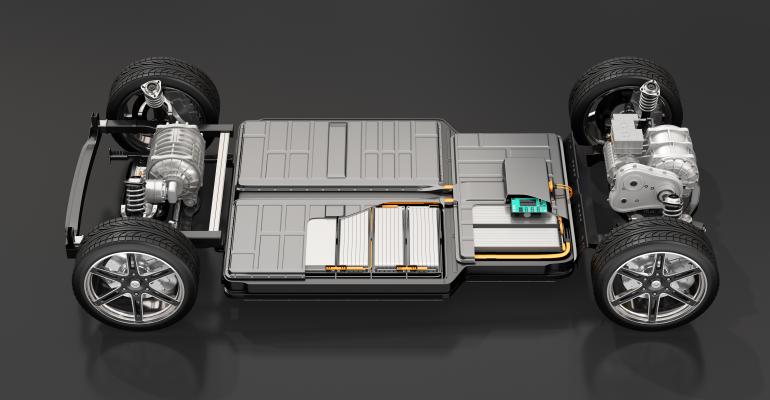Battery-electric vehicles in 2025 will need to travel 350 miles (563 km) on a full charge and replenish spent batteries within 10-20 minutes, according to a Wards Intelligence survey of industry insiders sponsored by Teijin Automotive Technologies.
Battery packs will evolve into key structural components for BEVs by the middle of the decade, even while becoming lighter, as automakers and suppliers use a mix of materials strategically to cut weight and lower costs, the study shows.
Conducted from mid-August through early September 2021, the survey drew responses from more than 260 industry executives and engineers at automakers, Tier 1 and 2 suppliers and consultancies.
BEV demand is expected to grow sharply to an estimated 29 million sales annually worldwide by 2030 from just 4 million in 2020, according to a forecast from LMC Automotive.
The number of BEV nameplates available globally is set to climb from dozens now to hundreds by 2025, as automakers increase their model offerings amid expected post-2030 regulations ending the sale of new internal-combustion-engine vehicles in many key global markets.
For the industry to bring BEVs to market that have longer ranges and faster charge times, as well as those that are price-competitive with ICE models, next-generation battery packs will need to be lighter and more energy-dense than their predecessors, and cost less as well, say respondents to the 2021 Battery Electric Vehicle Future survey.
Among the key findings of the survey:
- A plurality of survey respondents (45%) believe BEVs will need to travel more than 350 miles on a single charge to become a competitive alternative to ICEs by 2025.
- Industry insiders say on average BEVs must be able to recharge to 80% capacity within 10-20 minutes.
- Overall, industry insiders believe a battery-pack cost of $90-$99/kWh should be targeted in order to make BEVs price-competitive with ICEs in four years’ time. That represents a drop of about $30-$40/kWh from current levels. Automakers are slightly less convinced a sub-$100 cost will be necessary to spur sales, however.
- Structural battery packs, those that are an integral part of the chassis, are set to become the norm, with most survey respondents pointing to 2025-2027 as the likely timeframe for this to occur.
- While Tesla and Volvo tout cell-to-pack design as the future for BEVs, 38% of respondents surveyed say modular pack design will dominate going forward.
- Battery pack enclosures will shift from primarily aluminum and steel to mixed materials, including composites, for BEVs in the market in 2025, as automakers look to reduce weight and cost.
- A strong plurality (43%) of survey respondents overall say increasing cell-power density, such as via the use of more advanced cell chemistries such as lithium-metal and solid state, will be the biggest contributor to weight reduction in next-gen battery packs.
WardsAuto will post a more detailed look at the Wards Intelligence/Teijin Automotive survey in coming weeks.





